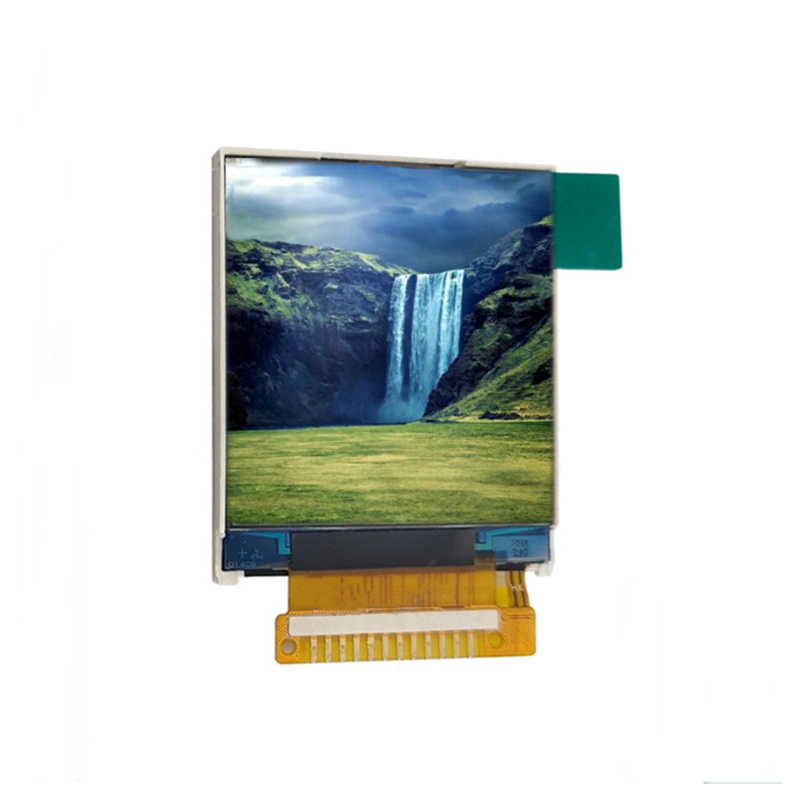TFT vs OLED Display Modules: A Comprehensive Comparison
In the world of display technologies, Thin-Film Transistor (TFT) and Organic Light-Emitting Diode (OLED) are two prominent contenders. Each has its unique set of characteristics, advantages, and drawbacks. This article aims to delve into a thorough comparison between TFT and OLED display modules, considering functional features, advantages and disadvantages, indicator differences, applications, and more.
Functional Features
TFT Display Modules
Thin-Film Transistor (TFT) technology is a type of active matrix liquid crystal display (LCD). TFT displays use a thin-film transistor for each pixel, allowing precise control over individual pixels. This results in vibrant colors, high resolution, and excellent image quality. TFT displays are commonly used in smartphones, tablets, and computer monitors.

OLED Display Modules
Organic Light-Emitting Diode (OLED) displays, on the other hand, utilize organic compounds that emit light when an electric current is applied. OLEDs are inherently emissive, meaning each pixel generates its light, resulting in deep blacks, high contrast ratios, and faster response times compared to TFT displays. OLEDs are commonly found in high-end smartphones, TVs, and wearable devices.
Advantages and Disadvantages
TFT Display Modules
Advantages:
Cost-Effectiveness: TFT displays are generally more cost-effective to produce, making them a preferred choice for budget-friendly devices.
Longevity: TFT displays tend to have a longer lifespan compared to OLEDs, as they are less susceptible to burn-in issues.
Outdoor Visibility: TFT displays often perform better in bright outdoor conditions due to their higher brightness levels.
Disadvantages:
Limited Viewing Angles: TFT displays may experience color and contrast shifts at extreme viewing angles.
Thicker Build: TFT displays are typically thicker than OLED displays, which might impact the overall design of slim devices.
OLED Display Modules
Advantages:
High Contrast Ratio: OLEDs offer superior contrast ratios and deeper blacks, leading to an enhanced viewing experience.
Flexibility: OLEDs can be manufactured on flexible substrates, allowing for curved and flexible display designs.
Faster Response Time: OLEDs generally have faster response times, reducing motion blur in fast-paced scenes.
Disadvantages:
Limited Lifespan: OLED displays are prone to burn-in, where static images may cause permanent damage over time.
Production Cost: OLED displays are more expensive to produce, impacting the overall cost of devices that incorporate this technology.
Indicator Differences
TFT Display Modules
TFT displays rely on a backlighting source, commonly using Light Emitting Diodes (LEDs). The backlight passes through the TFT layer and liquid crystals, creating the image on the screen. This method allows for consistent brightness across the entire display.
OLED Display Modules
OLED displays, being self-emissive, do not require a separate backlight. Each pixel emits its light, allowing for precise control over individual pixels. This results in truer blacks and a higher contrast ratio.
Applications
TFT Display Modules
TFT displays find widespread applications in various devices, including:
Smartphones and Tablets: TFT technology is commonly used in the displays of smartphones and tablets due to its cost-effectiveness and good overall performance.
Computer Monitors: TFT displays are prevalent in computer monitors, providing sharp and vibrant images for everyday computing tasks.
OLED Display Modules
OLED displays are preferred in applications that demand high-quality visuals, including:
Premium Smartphones: High-end smartphones often opt for OLED displays to deliver superior color reproduction and contrast.
Televisions: OLED technology is widely used in premium televisions, offering an immersive viewing experience with deep blacks and vibrant colors.
Conclusion
In the TFT vs. OLED display module battle, the choice ultimately depends on the specific requirements of the device and its intended use. TFT displays are cost-effective and have a longer lifespan, making them suitable for budget-friendly devices and applications where burn-in is a concern. On the other hand, OLED displays excel in delivering superior image quality, making them the preferred choice for high-end smartphones, televisions, and applications where flexibility and faster response times are crucial. As technology continues to advance, both TFT and OLED display modules will likely undergo further enhancements, bringing forth even more innovative and visually stunning displays for consumers.

